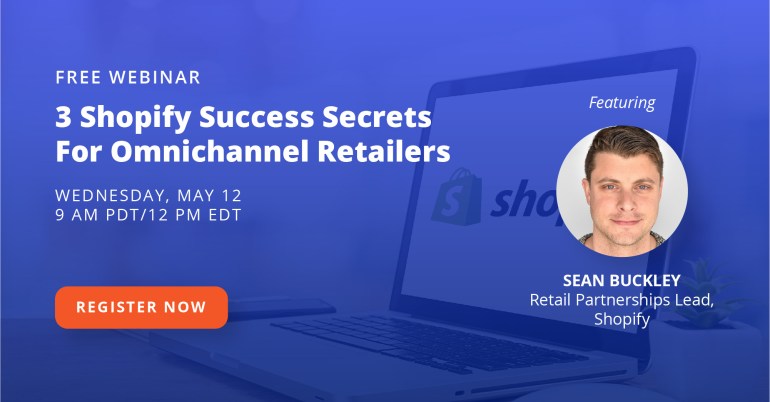
Is Online Enough? Growing Revenue With a Multichannel Ecommerce Strategy
Contents
A single-channel ecommerce business is like a pool being filled by a single hose. If that hose gets a kink, or the faucet gets turned off then there is nothing new flowing into the pool. The water will eventually evaporate completely. This is the reality for many businesses that see 90-100% of their revenue coming from one single channel.
The more hoses in the pool, the faster the water rises. But we don’t want to add an additional trickling hose just for the sake of diversification. Whether it’s your website or Amazon, if it’s accounting for less than 5% of your total sales, that is considered a trickle, not a viable revenue stream. We want to make sure the additional income streams you activate today are strong and healthy now, and in the future.
Expansion
Marco Lalau started Groomers Pro in 2005 as an on-the-go pet grooming business that he ran out of his van. As the company made a name for itself as a provider of best-in-class grooming supplies, it expanded to a catalog, then added two different websites. These direct sales channels were successful, but Lalau saw an opportunity to reach buyers where they were already shopping, Amazon. Groomers Pro has found success there as well, thanks in part to Lalau’s strategy of carefully selecting items that have little to no competition on the platform.
“Amazon is our ‘side hustle,’” Lalau said. “We don’t depend 100% on Amazon. That’s our competitive advantage.”
By making channel expansion a priority and approaching the Amazon marketplace with a specific strategy, Lalau has successfully added another strong flowing hose to the pool. Whether you want to start selling on Amazon, open a brick and mortar, or get your product on the shelves at Target, you have to first determine your goal for channel expansion.
Are you looking for fast revenue, or your largest opportunity? Are you trying to offset the weakness of a channel you already have, or trying to find the easiest new channel to deploy? Knowing your goal will help determine which channel is best for you to activate.
Amazon Expansion
Generally, focusing on Amazon and your own website checks the boxes for fastest, largest, and easiest opportunity. Amazon has 310 million shoppers, nearly 10x the number of annual visitors to the Mall of America. Those 310 million people spend $150 billion each year, and 52% U.S. customers begin their online buying journey on Amazon. But there is a catch to gaining access to all those buyers.
If you are expanding to Amazon, or you already have and are struggling to win sales, the number one reason is your product’s location. If those 310 million shoppers don’t see your product at the top of Page 1, then your product is not being found.
“You need to have a system so your products are findable,” Emily Wilcox of Elevate said. “If you don’t, you’re really no better than if you are selling your products in the middle of the Sahara Desert. Your products might be the best thing out there, but nobody can find them.”
Whether it’s superior visual marketing through better product photos or videos, or a clever SEO strategy, getting your product to the top of Page 1 is vital.
“If you want to commit to being on Amazon, you need to commit to being findable on Amazon,” Wilcox said.
Direct-to-Consumer Website Expansion
You probably already have a website to sell your products on, but how is it performing? If revenue is trickling in, the number one thing companies overlook with Direct to Consumer is traffic. You are responsible for driving it. If buyers cannot find your website, it might as well join your Amazon listings in the middle of the Sahara Desert.
There are many levers to pull to increase traffic to your website. Leveraging influencers, Facebook and Instagram ads, and good old fashioned PR tactics are all options for bringing buyers to your site. There are whole teams of professionals dedicated to the craft of increasing online traffic that you can bring in to help.
As soon as those customers begin buying directly from your website, you also have the advantage of “owning that customer.” Once you have their information it is much easier to remarket to them with promotions and sales, and increase their loyalty, average order value, as well as the lifetime value of that customer.
With the proper branding and dedication your website can even turn into a thriving “store.” Purple mattress and MeUndies started as online, DTC brands selling products we would typically associate with an in-store purchase. However, both companies found great success online, and then they expanded to brick and mortar. Malls around the country now have Purple stores, and MeUndies has opened a store in Los Angeles and hosts various pop-up shops.
Jessica Luengo sought help from Elevate to launch her company, Naturally Clean Eats, onto Amazon to grow sales of her snack bars and reach new customers. She quickly found traction on the marketplace, growing from $0 – $5,000 per month in sales and receiving a number of 5-star reviews. Jessica’s exposure on Amazon led to a deal with Target, where her snack bars now sit alongside industry staples.
The seemingly reverse approach of these companies is becoming more common as more and more shopping moves online. Selling does not have a one size fits all template, and neither does diversification. Expansion is best viewed as a sequential process, with one channel informing and helping to build the next. When done correctly, every channel you expand to is going to open up more opportunities for your business.
Channel expansion does not have to be EITHER/OR. In fact, it should be BOTH/AND. Too many companies worry about channel cannibalization, Amazon stealing sales from their own website, or vice versa. The data proves this to be a non-issue. You can grow multichannel in parallel without the fear of one withering.
“You shouldn’t feel like you’re backing yourself into a corner and making a decision that’s going to exclude other channels,” Wilcox said. “It’s really just a question of sequencing. Where do I invest my time and money next?”
Watch the Webinar on Demand
Yash Bodane is a Senior Product & Content Manager at Webgility, combining product execution and content strategy to help ecommerce teams scale with agility and clarity.




.png?width=56&height=56&name=image%20(1).png) Yash Bodane
Yash Bodane




